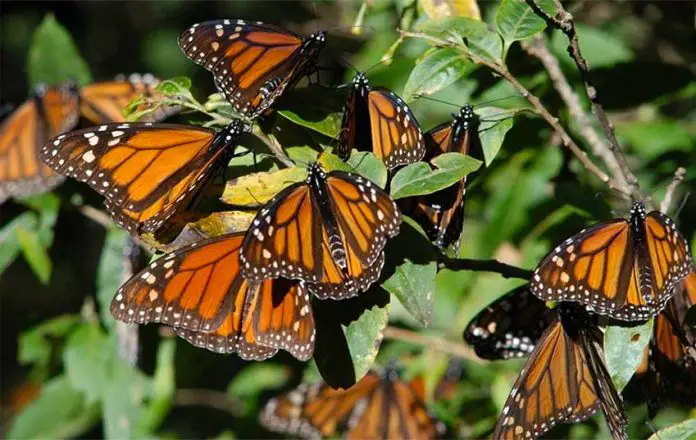A huge increase in the number of monarch butterflies overwintering in Mexican forests this year is a welcome event but not likely to happen again next year, some scientists warn.
The Natural Protected Areas Commission announced today that the area occupied by the butterflies is up 144% to 6.05 hectares. Last year the area was just 2.48 hectares.
Commission head Andrew Rhodes told a press conference that it was the largest area since 2006-2007, when it measured 6.87 hectares. The smallest area recorded was 0.67 hectares in 2013-2014.
But scientists say that six hectares should be seen as the minimum necessary for the viability of the insect, which migrates annually to Mexico in the fall from the United States and Canada. A Canadian ecology professor said the butterflies are not out of the woods yet, according to a report by The Associated Press.
“It buys us time, but that’s the best it does,” said Ryan Norris of the University of Guelph in Ontario, who sees little connection between the increase and conservation efforts along the butterflies’ route.
It is more about weather, he said. “It was a Goldilocks year this year,” he said. “Not too hot, not too cold, it was perfect.”
An ecology professor at the University of Kansas agreed. Chip Taylor said it won’t happen again next year, “not even close,” because above-average temperatures in Texas next year will cause problems for monarch production.
He said cold temperatures in the north of Texas kept the insects there to lay their eggs last spring. When it is warmer they go farther north too soon and the population does not grow as well.
The butterflies in this season’s migration have been found in 14 colonies in the forests of Michoacán and México state. One is a new colony, located in the Nevado de Toluca.
The largest, at 2.46 hectares, is in the Sierra Campanario sanctuary in the ejido El Rosario in Michoacán.
Source: The Associated Press (en), Milenio (sp)
